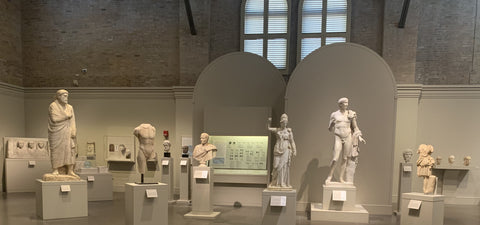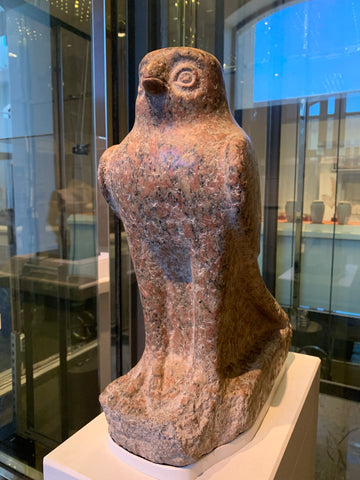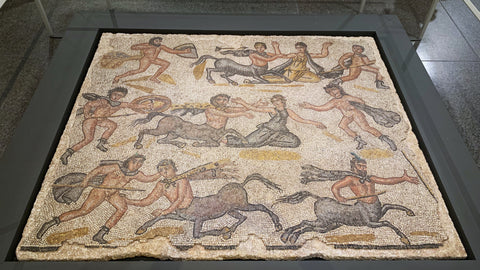The San Antonio Museum of Art - 5000 years of history in the Lone Star State
by Lindsay Powell
San Antonio in the heart of Texas is probably best known for the Alamo. But there’s more to see in the city than the ruins of a Spanish mission, which played a pivotal role in the Texas Revolution in 1836. The San Antonio Museum of Art (SAMA) has a collection of fine antiquities, which is well worth seeing in its own right.

SAMA is housed in an old industrial building featuring two great towers and crenellated parapets outside. Inside it has been completely reworked to provide permanent and temporary exhibition spaces. The website explains:
A visit to the San Antonio Museum of Art (SAMA) takes you around the world and through five thousand years of art in a complex of buildings that once housed the Lone Star Brewery. SAMA is renowned for the most comprehensive ancient Greek, Roman, and Egyptian art collection in the southern United States.
The Gilbert M. Denman Gallery for Ancient Sculpture features the collection of artefacts assembled by the San Antonio philanthropist. It encompasses portraits, funerary sculpture, and mosaics representing historical people and events, as well as mythological subjects.
A beautiful Horus falcon carved from red granite in the Ptolemaic Period greets the visitor. The Egyptian collection includes pots and painted mummy masks from Roman Egypt. The naturalistic three-dimensional mummy mask of a third century AD man made in stucco still retains traces of paint and its glass eyes.

Greek art is represented by stele, sculptures, and black-figure ceramics. A particularly poignant piece is the stela of a man-woman couple, names unknown, shaking hands over the head of a child, which was carved sometime in the fourth through first century BC. Another grave stela commemorates the poet Hippokrates, son of Apollodorus, who lived in the fifth century BC. A large clay amphora from the sixth century BC shows a four-horse chariot dramatically painted in black in a view seen from the front, which is unusual. The skills of ancient metal workers are displayed in a Corinthian-style helmet of the seventh century BC and a Phrygian-type helmet of the fifth.

From the Roman period there are several portrait busts of men and women with stern expressions. In contrast, a head of a bearded satyr or Silenus carved in red marble in the first century AD is a reminder that Romans like to eat, drink, and have fun. Naked statues of Emperor Trajan, with his distinctive haircut, and of Marcus Aurelius, with his curly hair but without his trademark beard, have been reassembled from fragments. Notable among the collection are the busts of Emperor Hadrian and his young lover Antinous as Dionysos. A third-fourth century AD mosaic floor depicts a fight between cartoonish drunken centaurs and sober Lapith warriors who attempt to rescue their women.

There are two special exhibitions relating to the Ancient World:
- ‘A Roman Portrait from Germany in Texas’, reported on in Ancient History Magazine issue 40, is open now and runs until 21 May 2023:
- ‘Roman Landscapes: Visions of Nature and Myth from Rome and Pompeii’ opens 24 February 2023 and runs to 21 May 2023.
On other floors are noted collections of Asian, Latin American, Texan, and Contemporary art.
SAMA is open all year round, except on national public holidays: check the museum’s website for details. Combined with a trip along the scenic River Walk and, of course, to the historic Alamo, a visit to SAMA makes a really great day out.
Further information:
San Antonio Museum of Art (SAMA)
200 West Jones Avenue
San Antonio
Texas, USA
TX 78215
Tel: +1.210.978.8100
Website: https://www.samuseum.org
YouTube Channel: https://www.youtube.com/@sanantoniomuseumofart
